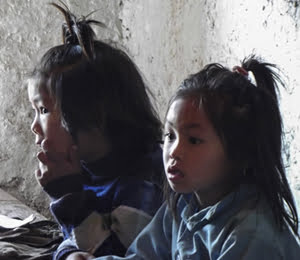
Early Childhood Development Further Reading
ECD ( Early Childhood Development ) materials are seen as an aid to influence a child’s development significantly. All material has a certain purpose. A child develops when he or she is active and acts accordingly. The child can use the materials independently. Automatically, the broad and specific development of the child is being enhanced.
Development material steers towards a certain activity:
Productive and constructive activities- Forming activities- Manipulative activities- Problem solving activitiesThe material is used to address a certain subject. At different levels with different materials a subject can be addressed. But leave enough room for the imagination—the less ‘examples’ on a subject the better. Still, monitor regularly to ensure that the child is working on the subject given.
Children feel attracted towards materials. Materials make children want to investigate and act accordingly. By working with materials the child has experiences which are important to his or her development and learning processes.
By using materials, the child will:
- take initiative and make plans;
- co-operate with other children which enhances making social contacts;
- form or create an opinion on the impressions of the world he or she lives in;
- learn to use different tools and techniques;
- learn to problem solve and come up with creative solutions;
- put all his/her functions to work (look, listen, move, use, think);
- build confidence.
The development materials offer the opportunity to learn specific knowledge and skills.
Examples are:
- The concept of floating and sinking;
- Exploring fitting, measuring and proportions;
- Practice memory and observation;
- Explore the laws of gravity
There are children who have a strong preference to certain material. He or she will always choose the “easy or safe way”. Therefore it’s important to constantly update and alter the materials. This inspires and challenges the child. There are different materials to explore the same concepts. Be creative in creating these. When there is new material, be mysterious about it. Play with it yourself or introduce it in a unique and funny way.
Different materials.
There are 4 main groups of development materials:
Forming materials:
The forming, cutting and altering of material with which an image or an imagination can be created. These experiences make it possible for the child to alter an imagination into reality and learning how to handle different materials (paper, pencil, paint, and scissors) and tools.
Forming materials can be divided into 3 groups:
- Materials to draw and paint with
- Working with paper (folding, cutting)
- Materials to construct or make crafts with
Unformed materials
Materials the child can handle independently. Water, sand and clay. The material has no actual form yet. The child can ‘break’ it without any consequences. The different way of handling the material starts with the material itself. The child is introduced to the material and starts constructing from scratch. Later, the constructions will become more complicated. In a later stage the child learns about the different characteristics of the material.
Children will play at a sand or water table. Clay can be used on a plastic table or plastic placemat. Don’t use clay on wood, it will dry out quicker.
Different activities for defining play:
Sand: bake cakes, using a siff, make a mountain, use plastic forms.
Water: make a harbor, play with bubbles (washing liquid), float/sink (use different materials to let the child explore which material sinks and which floats), water run (from top to bottom, explore gravity and the natural run of water).
Constructive and compositioning materials
Materials which consist of loose parts with which a construction can be made. Children by nature have the urge to build with materials. Playing with these materials helps develop insight, forming and problem solving abilities. Make sure there is small material and big material. Small material enhances development of the fine motor skills. Using both small and large materials also increases interest.
The material can be divided into 3 groups:
- Building materials (blocks, rocks, wood)
- Construction material (blocks, rocks, wood)
- Mosaic material
Play-learn materials
This material has a certain goal. The child learns by play. The child learns because it actually does ‘real work’ and a finished product is visible. This material can be re-used and should be. The child can handle the material independently after it has been introduced by the teacher. The child will get used to the set structure of the game or puzzle. Children like using this material, because it offers structure and stability. The child knows what is expected.
Examples of play-learn material:
- Work sheets (connect the dots, color the number)
- Puzzles
- Memory game
- Domino game
Early literacy:
When a child shows interest in letters, words and stories, please encourage reading. Give them letters out of sand paper to trace with their finger, or a bit of sand to trace the letters in, copy the alphabet in, etc. Make an alphabet table. Address a different letter each week by putting it up in the classroom. Beneath you will have a table with different objects which start with the letter (A- apple, address book, apple juice, etc).
Reading:
Reading is very important. Make reading special. Create a cozy corner in the classroom where books are displayed. Put cushions and posters. Children love to grab a book and “pretend” to read even if they can’t (expression of ‘make believe of the real world’). Especially if the book has been read by the teacher before, they will grab it and read it to themselves or friends, just by looking at the pictures. They usually recognize the story line, or make one up (enhances fantasizing).
When reading to a child or group, start by introducing the book itself. The front, the back, the pages (name all these parts). Look at the picture on the front and the title and have the children guess what the book might be about. Then read the first page and ask questions on the text. They have to try to retell the story in their own words and also predict what could happen on the next page. This is very important for vocabulary and thinking about cause and effect. At the end of the book have the child make a drawing about it—maybe about a certain scene or about the whole story.
Children drawings:
When a children draw, they want to express themselves or tell a story without words. Have the child talk to you about the drawing and you can put the words in the drawing. This enhances vocabulary and helps them explain the picture to their parents. When a child comes home with the drawing and the parents see the drawing with the words, they can ask questions about it. This strengthens the parents’ participation in the child’s school life.
Never, ever correct a child’s drawing. If the sky is green, the sky is green. If a person is orange, the person is orange. It’s the child’s imagination. Who are you to correct and tell them the sky is blue. This is very important. A drawing can never be wrong!
Spelling:
Early spelling and reading.
Teach children the ABC’s by playing games. Don’t let them reproduce the words, this does not teach them anything. Make a word puzzle or a word snake.
Have them come up with as many words starting with A (B, C, etc.) as possible. They will recognize the sound and will know more words than you think. If not correct, don’t punish, but encourage to try again, helping by giving hints.
Put items on a table starting with A, B, C. etc. and have the child categorize them.
Don’t let them reproduce words without knowing the meaning of it. Learning by pictures alone is dangerous. For instance, when teaching fruits or vegetables, take these to school. Let them taste, feel, smell.
Sentence structure
Fine motor skills:
- Create a shoe lace board, a button board, a zipper board.
- Use a big needle and some felt and have them puncture out drawings. This makes a great crafts exercise.



